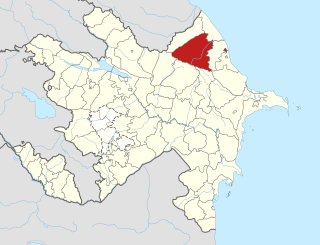
Quba District is one of the 66 districts of Azerbaijan. It is located in the north-east of the country and belongs to the Guba-Khachmaz Economic Region. The district borders the districts of Qusar, Qabala, Ismayilli, Shamakhi, Shabran, and Khachmaz. Its capital and largest city is Quba. As of 2020, the district had a population of 173,400.
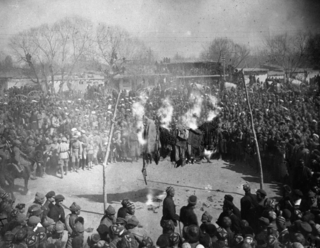
Hujum refers to a broad campaign undertaken by the Communist Party of the Soviet Union to remove all manifestations of gender inequality within the Union Republics of Central Asia. Beginning in the Stalinist era, it particularly targeted prevalent practices among Muslims, such as female seclusion from society and female veiling practices. While it was often symbolized by the burning of the veils that Muslim women wore, the removal of veiling practices was not the campaign's sole goal. The Party began re-emphasizing their message of women's liberation within class consciousness. By abolishing Central Asian societal norms and heralding in women's liberation, the Soviets believed they could clear the way for the construction of socialism. The campaign's purpose was to rapidly change the lives of women in Muslim societies so that they would be able to actively participate in public life, formal employment, education, and ultimately membership in the Communist Party. It was originally conceived to enforce laws that gave equality to women in patriarchal societies by creating literacy programs and bringing women into the workforce.

Marziyya Yusuf gizi Davudova, also spelled Marziya Davudova, was a Russian-born Soviet Azerbaijani actress who starred in theatre and silent film. She was awarded the People's Artist of the USSR (1949).

Jafar Gafar oghlu Jabbarly, was the eminent Azerbaijani and Soviet writer, the founder of the Azerbaijan soviet dramaturgy. He was a director, playwright and screenwriter.
The Ministry of Defence Industry of Azerbaijan is a governmental agency within the Cabinet of Azerbaijan in charge of design, manufacturing, regulation and maintenance of products in the fields of defense, radio electronics, instrument engineering.
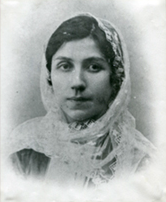
Sakina Mirza Heybat qizi Akhundzadeh was an Azerbaijani playwright. She was the first known female playwright and dramatist in Azerbaijani literature.
Fuad Hasan oglu Abdurahmanov was a popular Azerbaijani monument sculptor. He received many awards, including: Honored Worker of Arts of the Azerbaijan SSR (1943), People's Artist of the Azerbaijan SSR (1955), the first Azerbaijani to become a corresponding member of the Academy of Arts of the USSR (1949), and Laureate of the State Stalin Prize two times.
Shusha Musical Drama Theatre is one of the musical drama theatres operating in Azerbaijan.
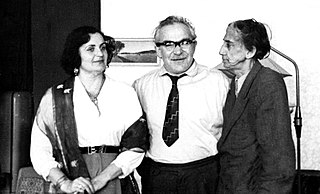
Maral Yusif gizi Rahmanzadeh was a Soviet and Azerbaijani graphic artist and painter. She was awarded the honorary title of People's Artist of the Azerbaijan SSR (1964), and recipient of the State Prize.
The Monument to Nizami Ganjavi, a medieval Persian poet, is located in Baku in Nizami Square, on the intersection of Istiglaliyyat, Ahmad Javad, Azerbaijan and Islam Safarli streets.
Jalal Maharram oglu Garyaghdi was an Azerbaijani monumentalist sculptor and People's Painter of Azerbaijan SSR (1960). He was one of the pioneer monumentalist sculptors of Azerbaijan, along with Fuad Abdurahmanov.
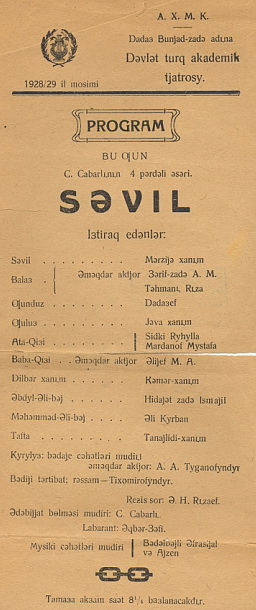
Sevil is a play by Azerbaijani playwright Jafar Jabbarly written in 1928. It focused on the theme of the role of women, their oppression, struggle, and ultimately, victory over dated patriarchal traditions. Many women discarded their veils in the city theater after seeing the play.
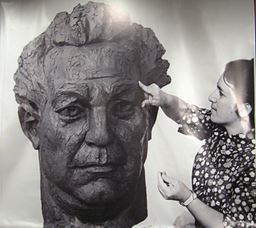
Elmira Hüseynova was an Azerbaijani sculptor and portrait painter, who has exhibits in various locations throughout the world and was honored as an Honored Artist of Azerbaijan.
The monument to Nizami Ganjavi is a monument to the outstanding Persian poet Nizami Ganjavi, located in the hometown of the poet, Ganja, Azerbaijan. The monument was erected in 1946.
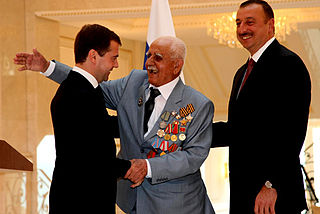
Agadadash Samedov is an Azerbaijani veteran who fought in the Great Patriotic War as a Soviet soldier.
The house-museum of Jafar Jabbarly is a memorial museum dedicated to the Azerbaijani playwright, poet, director and screenwriter, Jafar Jabbarly (1899–1934).

A statue of the 16th-century Azerbaijani poet, writer, and thinker Fuzuli forms a major monument in the city of Baku. The statue was prepared by Azerbaijani sculptors Tokay Mammadov and Omar Eldarov between 1958 and 1963. The architect of the statue is Haji Mukhtarov.

Izzet Khanim Mirzaaga Orujova was an Azerbaijani chemist and actress. She was the first Azerbaijani film actress, starring in the film Sevil (1929), and an important figure in the Azerbaijani women's rights movement for her portrayal of a liberated young woman in the film. She later enjoyed a distinguished academic career, being one of the first female chemistry students in Azerbaijan and the country's first female oil engineer. Her research on improving motor oils was important to the war effort of the Soviet Union in World War II and earned her the Order of the Badge of Honour. Throughout her scientific career she authored hundreds of works, held talks internationally, and was awarded numerous other awards.
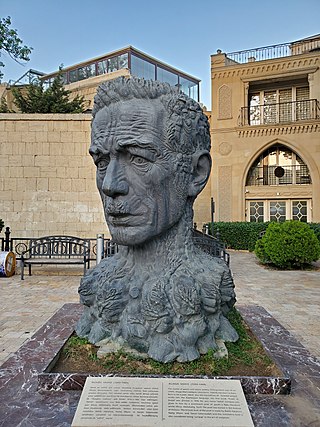
Aliagha Vahid Monument is monument in Baku, capital of Azerbaijan, in honor of the Azerbaijani poet and ghazal singer Aliagha Vahid (1895–1965). It was built in 1990.
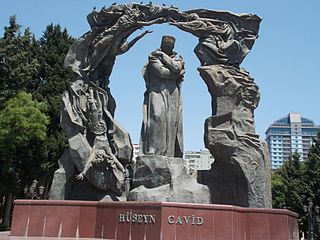
Huseyn Javid Monument is a monument to the Azerbaijani poet Huseyn Javid, located in Baku, the capital of Azerbaijan, in a park named in his honour, located on the Huseyn Javid Avenue. The authors of the bronze-cast monument are the People's Artist of Azerbaijan, the sculptor Omar Eldarov and the architects Yusif Gadimov and Rasim Aliyev. It was installed in 1993.














